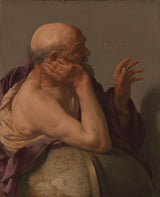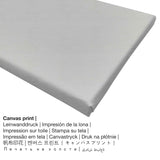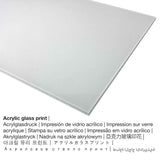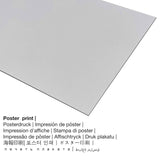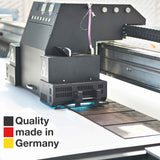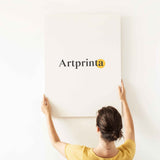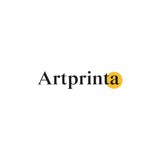Hendrick ter Brugghen, 1628 - Heraclitus - fine art print
Taxes incluses. Frais de port calculés au paiement.
The print product offering
In the year 1628 the male artist Hendrick ter Brugghen created this baroque artwork titled "Heraclitus". Moveover, this artpiece can be viewed in in the Rijksmuseum's digital art collection, which is located in Amsterdam, Netherlands. The classic art public domain artpiece is supplied with courtesy of Rijksmuseum.Creditline of the artwork: . Besides this, the alignment of the digital reproduction is portrait and has an image ratio of 1 : 1.2, which implies that the length is 20% shorter than the width. Hendrick ter Brugghen was a male painter from the Netherlands, whose style was primarily Baroque. The Dutch artist was born in 1588 in Hague, The, South Holland, Netherlands and deceased at the age of 41 in the year 1629.
Fine art print materials which we offer:
For every art print we offer a range of different sizes and materials. We allow you to pick your favorite size and material among the following product individualization options:
- The canvas print: The printed canvas material mounted on a wood stretcher frame. The canvas generates a soft and comfy ambience. Canvas prints are relatively low in weight. That means, it is easy to hang the Canvas print without the help of additional wall-mounts. That is why, a canvas print is suited for any type of wall.
- Poster print (canvas material): A poster is a printed sheet of canvas with a slightly roughened finish on the surface. It is particularly suited for placing your art copy with the help of a custom frame. Please keep in mind, that depending on the size of the poster print we add a white margin of around 2-6 cm round about the artwork, which facilitates the framing.
- Print on glossy acrylic glass: An acrylic glass print, often referred to as a print on plexiglass, will change your favorite original into gorgeous décor. The great benefit of an acrylic glass fine art print is that contrasts and small details become more identifiable due to the very fine gradation. The real glass coating protects your custom art print against light and external influences for up to 60 years.
- Aluminium dibond print (metal): An Aluminium Dibond print is a print material with a true depth effect, which makes a fashionable impression with a surface structure, that is not reflective. The Direct Print on Aluminum Dibond is the ideal start to art reproductions with aluminum. The white & bright parts of the original work of art shimmer with a silk gloss but without any glare. The colors are luminous and bright, the details of the print appear clear and crisp. This direct UV print on aluminium is the most popular entry-level product and is a truly stylish way to display art prints, since it puts the viewer’s focus on the replica of the artwork.
Important note: We do whatever we can to describe the products as precisely as possible and to illustrate them visually. However, the colors of the printing material, as well as the imprint can diverge to a certain extent from the presentation on your device's monitor. Depending on the settings of your screen and the condition of the surface, color pigments may not be printed as exactly as the digital version on this website. Considering that all the are printed and processed manually, there might as well be minor discrepancies in the motif's size and exact position.
The product
| Print categorization: | art reproduction |
| Reproduction: | digital reproduction |
| Production technique: | digital printing (UV direct print) |
| Product Origin: | Germany |
| Type of stock: | on demand production |
| Product use: | art collection (reproductions), home design |
| Alignment: | portrait alignment |
| Image aspect ratio: | (length : width) 1 : 1.2 |
| Implication: | the length is 20% shorter than the width |
| Available product materials: | canvas print, poster print (canvas paper), metal print (aluminium dibond), acrylic glass print (with real glass coating) |
| Canvas on stretcher frame (canvas print) variants: | 50x60cm - 20x24", 100x120cm - 39x47" |
| Acrylic glass print (with real glass coating) variants: | 50x60cm - 20x24", 100x120cm - 39x47" |
| Poster print (canvas paper) sizes: | 50x60cm - 20x24", 100x120cm - 39x47" |
| Aluminium print (aluminium dibond material) variants: | 50x60cm - 20x24", 100x120cm - 39x47" |
| Art print framing: | not available |
Details on the original work of art
| Artpiece name: | "Heraclitus" |
| Artwork categorization: | painting |
| General term: | classic art |
| Century: | 17th century |
| Created in: | 1628 |
| Artwork age: | more than 390 years |
| Museum / location: | Rijksmuseum |
| Museum location: | Amsterdam, Netherlands |
| Museum's website: | www.rijksmuseum.nl |
| License type: | public domain |
| Courtesy of: | Rijksmuseum |
Brief overview of the artist
| Name: | Hendrick ter Brugghen |
| Also known as: | Hendrick Terbrugghen, terbrugghen, Hendrick Terbruggen, Terbruggen Hendrik, terbrugghen henrick, Hbrugghen, Terbrugghen Hendrik, טרבורגן הנדריק, Hendrik ter Bruggen, Ten Brugge, terbrueggen, Ter Brugge, hendrik terbrugghen, Terbruggen, Ter Brugge Hendrick, Hendrick ter Brugghen, Brugghen Hendrick Jansz. ter, Ten Brugge Hendrick, Heyndr. ter Burgh, Verbrugh, Enrico d'Anversa, Henrick Terbrugghen, Ter Brug, Hendrik Ter Brugghen, Ter Brugh, Terbrugghen Hendrick, H Brugge, Terbrugghen Hendrick ter, Terbruggen Hendrick, Terbrugh, hendrik terbruggen, Terbrugghen Heinrick, Ter Brugghen Hendrick, Terbrugghen Hendrick Jansz. ter, Brugghen Hendrickjansz. Ter, Henrico ter Bruggen, Ter Brugghen, Van der Brugge, Brugghen Hendrick ter, Terbrugge, Terbrugge Hendrick |
| Gender of the artist: | male |
| Nationality of artist: | Dutch |
| Professions: | painter |
| Country of the artist: | the Netherlands |
| Artist classification: | old master |
| Styles of the artist: | Baroque |
| Died at the age of: | 41 years |
| Born: | 1588 |
| Birthplace: | Hague, The, South Holland, Netherlands |
| Year of death: | 1629 |
| Place of death: | Utrecht, Utrecht province, Netherlands |
Copyright ©, Artprinta.com (Artprinta)
Artwork description by Rijksmuseum (© Copyright - by Rijksmuseum - www.rijksmuseum.nl)
The Greek sage Heraclitus was known as the crying philosopher because he mourned the folly of mankind, while his opposite Democritus (the nearby pendant) could only laugh at it. Here Heraclitus looks like a melancholy old man. Downcast, he leans on a terrestrial globe and gestures dismissively with his left hand, as if to say: ‘All is for nought, the world will come to nothing.’

